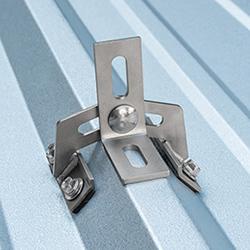ALTERNATIVE AND CONVENTIONAL ENERGY SOURCES REACH GRID PARITY
The further anticipated price hike of conventional electricity from mid-2013 onwards creates a viable economic argument for the use of alternative sources of energy.
The further anticipated price hike of conventional electricity from mid-2013 onwards creates a viable economic argument for the use of alternative sources of energy. While alternative sources of energy may have been too costly to contemplate a few years ago, now the cost of renewable energy components has decreased from approximately R54.00 to R5.40. This makes the installation of a renewable energy system on a corporate, industrial or commercial retail building roof, a far more viable investment. In terms of pricing, the cost of electricity and renewable energy are on par, the term used, being grid parity.
Over recent months, there has been a positive shift from conventional power sources to the use of renewable energy. A number of large corporate companies and industrial and commercial retail businesses are taking the decision to reduce their dependency on conventional energy sources. This not only reduces their carbon footprint and improves energy efficiency but also makes good business sense.
An example of how a corporate business can commit to environmental and sustainability efforts and reduce carbon emissions within their organisation, is with the installation of a solar energy producing system on the roof of their office building. Typically, an installation with 500 kWp output is expected to produce approximately 75% of all electricity required by the building during peak production. This solar array will assist the business with savings on utility bills and improve energy efficiency, offsetting approximately 25% of the building's electrical energy use throughout the year. This could result in a potential energy saving of about 895 MWh per annum, equal to charging more than 70 million mobile phones over that same period.
In some municipalities, the excess capacity produced by a solar energy producing system can be fed into the grid, but mostly without monetary compensation. Globally, there are feed-in tariffs in place; corporate, commercial, industrial and residential users become power producers and are compensated for their renewable energy electricity production. At a minimum, owners of such a system can reduce their need for utility energy during peak energy demand periods of the day when utilities are challenged to serve the area's power needs. In some regions of the world, this peak energy �saving' is known as "peak shaving". This additional source of solar energy can help to avoid the necessity of brown-outs or the need to reduce loads or to eliminate the need to shut down sectors of the grid.
By using AEG Power Solutions' alternative solar energy products, corporate, commercial and industrial users would realise these substantial energy savings. This allows customers to trim operational expenditure instead of facing a potential 40% increase in electricity prices over the next five years.
"The cost of turning to alternative power sources is now at grid parity, and the payback period on the initial investment has been significantly reduced in recent years. As companies are seeking to become self-sufficient in terms of energy usage, alternative energy makes sense," points out Trevor de Vries, Managing Director of 3W Power/AEG Power Solutions South Africa.
As the first in southern Africa to manufacture utility-scale solar inverters locally, with a local content of 60%, the 3W Power/ AEG Power Solutions facility offers proudly South African solar energy products and services.
Featured Product

